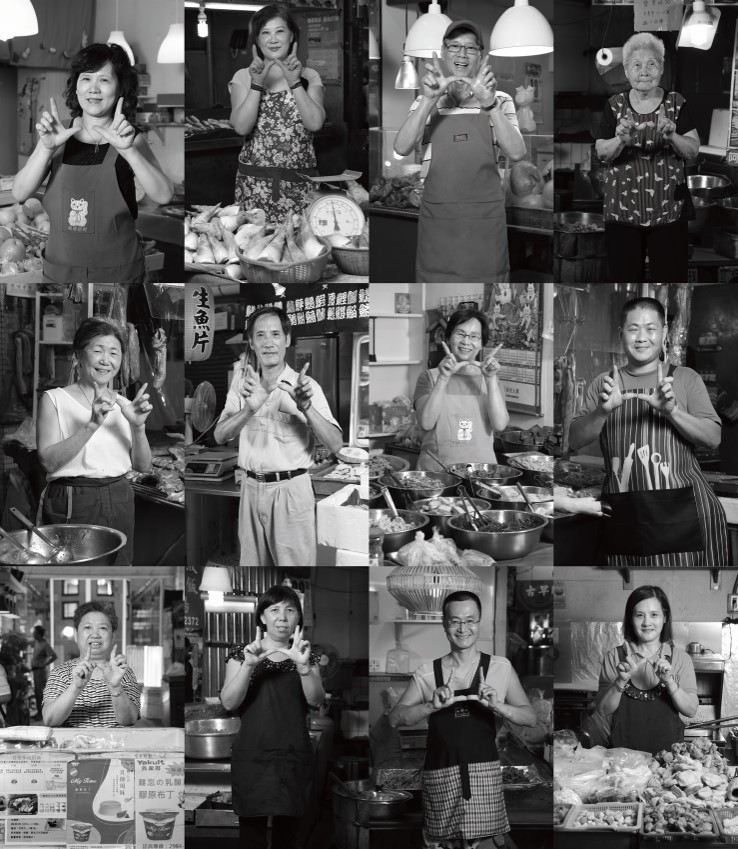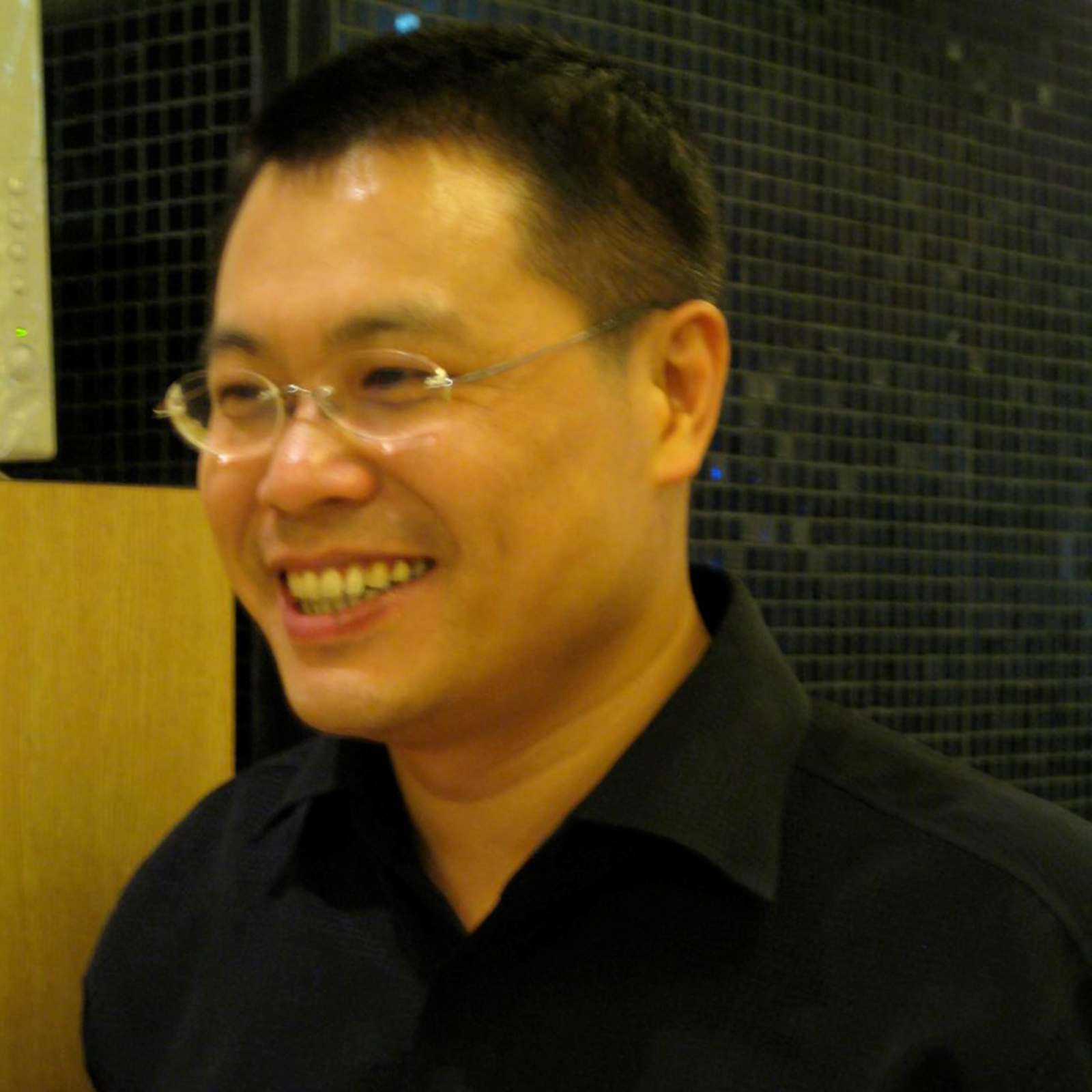
©陳永賢
| See U 2018 攝影、黑白、藝術微噴、無酸裝裱 一組6件 138x120cm |
See U 2018 Photograph, black-and-white, giclée, acid-free framing 1 set 6 pieces 138x120cm |
作品簡介 / 創作自述 About Artworks
以建築空間的思考為軸線,融入地方場域和集體記憶,藉由人物姿態與手勢的比擬語彙,導引出人與人之間的互動經驗、人與空間所產生的關聯隱喻。也就是說,將個人記憶置放於社會環境層面,在時間與空間的變異過程中,回應生活場域如何滲透彼此,經由符號轉換後,讓每一種知覺記憶都有其社會的脈絡可循。
空間有記憶嗎?記憶不僅是個體在一段時間中的偶遇,也對應於特定空間、共同棲居的集體記憶。回溯歷史,興建於1935年的臺北市萬華新富町食料品小賣市場(現為新富町文化市場),是一座日治時期的零售市場,經歷1945年二戰空襲,勞力人口短缺而陷入停頓。戰後,此空間又重新開張,促使勞動者再度回到這場域周遭,讓主體意識更為明朗。
日治時期殖民地政府所推進現代化衛生設施,使建築本體擁有U字形的結構外觀,內部格局大量開窗,中庭設置U字形天井。世代更迭後重回現場,市場人物擺出U手勢,在他們心目中,肢體語言勝過千言萬語,象徵意義遠勝於華麗詞藻。此時的身勢語代表什麼?這無聲的交流信息,扣連於建築空間記憶,表達了場所精神的承傳標誌。空間記憶並非真實呈現原本的過去,而是透過身體姿態與自我意識來形塑時空關聯、群體關聯、重構性等特徵,顯示一種跨越時空和人文向度的融合。
Incorporating local sites and collective memories along the axis of architectural thinking, this work reflects people’s interactive experiences and invokes associative metaphors between humans and spaces. To put it another way, this work situates individual memories within social milieus and seeks to demonstrate how these quotidian sites infiltrate one another over the course of spatial and temporal evolution. By dint of symbolic transformation, this work gives each sensory memory a comprehensible social context.
Does a space have any memory? Memory is not simply a chance encounter of an individual over a period of time, but also a shared experience of collective dwelling in a specific space. In history, the Shintomichō grocery market in Monga, Taipei (now the U-mkt) was established in 1935 under the Japanese rule. It went into precipitous decline due to the air-raids and labor shortages during World War II. This market was revived in the postwar era. It became a site that beckons for many workers and ergo foregrounded its own subjectivity.
When Taiwan was under Japanese rule, the colonial government promoted modern standards of urban hygiene, hence the U-shaped structure of this market building. Its internal layout is characterized by a large number of windows, and there is a U-shaped atrium in the courtyard. People make a “U” gesture at this historic site. In their mind, body language outweighs thousands of words, and symbolic meaning surpasses empty rhetoric. What does such a gesture denote here and now? The silent message is closely related to the memory of this building in which the spirit of this site finds expression. The memory of a space does not so much faithfully mirror the past as bristles with distinctive features (e.g., spatio-temporal connections, group connections, and reconstructiveness) through corporeal postures and self-consciousness, showing a kind of integration across space-time and humanism.
關於藝術家 About Artist

©陳永賢
陳永賢
生於臺灣,畢業於國立臺北藝術大學美術系學士、美術研究所碩士,以及英國布萊頓大學藝術博士。創作主軸探討身體與社會、人與環境、自身與他者的流動關係,長期關注社會群體生活中的個體行為,作品反映社會現象及矛盾等議題。曾舉辦個展包括《身體之歌》、《人層迴圈》、《他者之他》、《闢徑》和《隱遁者》等,作品曾受邀於國內外美術館進行超過七十餘次的展出,也曾到美國Watermill Center進行駐村;曾獲英國貝克獎、加拿大楓葉銅楓獎。
Yung-Hsien Chen
Born in Taiwan, Yung-Hsien Chen earned his bachelor’s and master’s degrees in fine arts from the Taipei National University of the Arts. He then obtained his doctorate in fine arts from the University of Brighton in the United Kingdom. His oeuvre revolves around the fluid relationships between the body and society, people and the environment, as well as between self and others. He has paid long-term attention to individual behavior in social communities, which is materialized in his works that reflect the issues concerning social phenomena and conflicts. His major solo exhibitions include The Song of Body, One in a Loop, Into/Out of the Other, Routes in/Outside, and The Recluse. He has been invited more than 70 times to present his works in art museums at home and abroad. He was also an artist-in-residence at the Watermill Center in the United States, and the winner of the Back’s Future Prize for Film and Video, London and the Bronze Maple of the Maple Leaf Award, Toronto.
